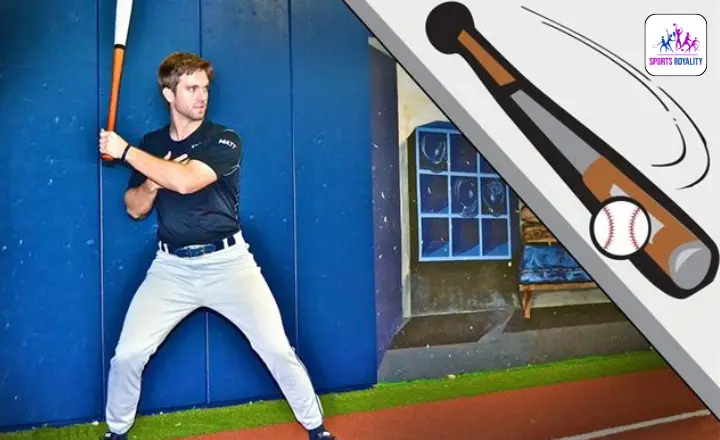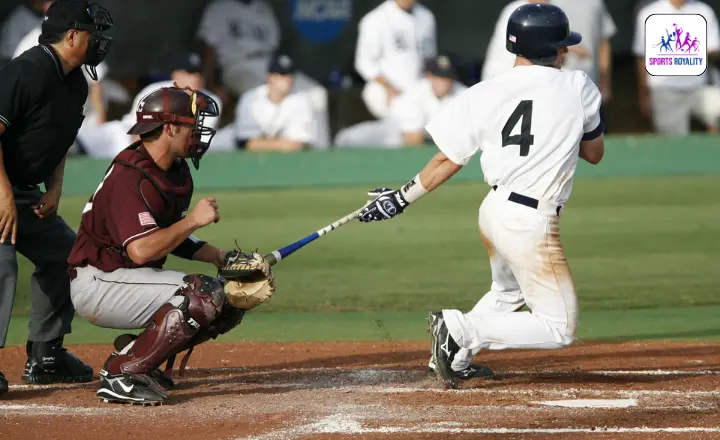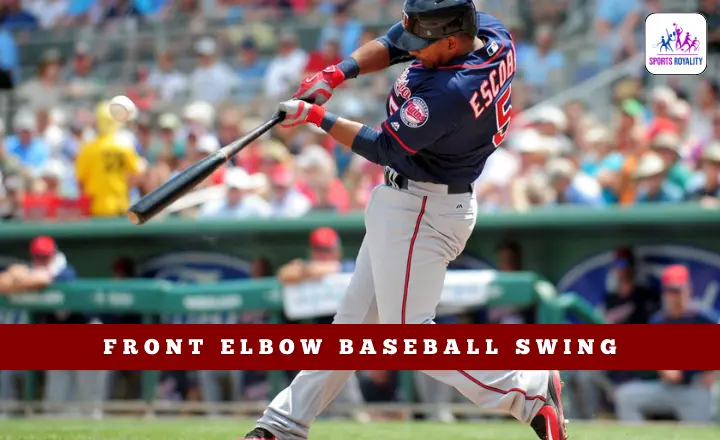Nothing is as thrilling as witnessing a powerful swing soaring the ball over the outfield fence. It’s a display of strength, precision, and perfect timing. While players use various techniques to achieve this impressive feat, one approach that has gained considerable attention in recent years is the front elbow baseball swing.
This innovative technique focuses on harnessing the power generated from rotating and driving the front elbow forward during the swing motion, leading to increased bat speed and improved contact with the ball.
In this article, we will delve into the mechanics behind this intriguing technique and explore why it has become a game-changer for many hitters at all levels of baseball.
Understanding Front Elbow Baseball Swing
The front elbow plays a crucial role in the baseball swing, yet it often gets overlooked. Understanding how it functions can significantly impact a player’s performance at the plate.
The front elbow serves as a hinge that controls the bat’s path and angle of attack. When positioned correctly, it allows hitters to generate power and maintain control throughout their swing.
A common mistake many inexperienced players make is collapsing their front elbows too early in the swing. This reduces power and limits their ability to drive the ball with authority.
With the front elbow slightly bent, hitters can achieve a more robust and efficient swing. Maintaining this position also helps create separation between the upper body and lower body, allowing for better rotation of the hips.
Another vital aspect of understanding front elbow mechanics is knowing when to initiate its movement during the swing. Timing is everything in baseball, and this also applies to the positioning of your front elbow.
Players should focus on starting their swing by hinging their rear hip while keeping their front shoulder closed off to avoid pulling off pitches prematurely.
The once proper load has been achieved through rear hip activation, players can begin initiating rotation with their lead or “top” hand while controlling movement with proper use of counterbalancing techniques with both hands working in concert.
Different Types Of Front Elbow Positions
Baseball players exhibit various techniques with their front elbows. While some extend their entire arm during a full swing, others bend their arm.
When playing baseball, the front elbow can assume various positions. Here are the main ones provided for you.
Front Elbow Bar Swing
The front elbow bar swing is a mesmerizing and gravity-defying move that showcases both strength and agility. The practitioner hangs from a straight bar with one arm in this dynamic exercise.
While swinging their body forward and backward using only their front elbow as the pivot point. This movement demands incredible core stability, upper-body strength, and exceptional coordination and control.

What sets the front elbow bar swing apart from other exercises is its unique emphasis on isolating the front elbow joint. While many exercises prioritize engaging multiple muscle groups, this move focuses on strengthening the muscles surrounding the front elbow.
Practitioners can improve their grip strength, forearm durability, and overall upper body power by focusing on this often-neglected area. Mastering the technique of this exercise requires immense body awareness and precision control to execute smooth swings without losing balance or momentum.
Front Elbow Bent Swing
The front elbow bent swing is a crucial technique in baseball that can greatly impact a player’s performance. Unlike the traditional swing, where the elbow is fully extended throughout the motion, this version keeps the front elbow slightly bent. This seemingly subtle adjustment can have significant advantages for hitters.
One of the key benefits of the front elbow bent swing is improved bat speed and power generation. By keeping the elbow flexed, hitters can generate more torque and rotational force when swinging through the zone.
This increased bat speed can result in longer hits and higher exit velocities. With a bent front elbow, players can maintain proper alignment and balance throughout their swings, leading to more accurate contact with the ball.
With a bent front elbow, hitters can keep their hands closer to their bodies during their swings. This compact position allows them to cover more strike zone areas efficiently, making it more difficult for pitchers to locate pitches effectively.
Batters who employ this technique often benefit from greater adaptability at the plate and an improved ability to make solid contact with pitches across different locations.
How To Keep Front Elbow Bent In Baseball Swing
Keeping your front elbow bent in the baseball swing maximizes power and control. When your front elbow is extended, it causes your swing to become long and loopy, leading to weaker contact with the ball.
To maintain a bent front elbow, focus on your grip and hand positioning on the bat. Make sure that the base of your thumb rests on top of the knob of the baseball bat, allowing for better wrist flexion during the swing.
In addition to grip and hand positioning, proper body mechanics play a significant role in keeping your front elbow bent. Start by setting up with a slightly open stance to enable a more accessible rotation of your hips.
As you load up by shifting weight onto your back leg, ensure not to lock out or fully extend your front arm. Instead, keep it relaxed and at a 90-degree angle throughout the swing.
Another vital aspect to consider is staying balanced throughout the entire motion. Players often over-swing or lunge forward, resulting in an extended front elbow. Focus on maintaining good posture and keeping your weight centered over the balls of both feet from start to finish.
By consistently practicing these techniques and emphasizing proper mechanics, you will develop muscle memory to keep your front elbow bent in every baseball swing naturally.
It may take some time and effort initially, but once mastered, this technique can significantly enhance both power and accuracy in hitting.
Drill-1: Pause And Hit
Many players tend to straighten out their front arm during the swing, which can lead to a loss of power and control. By consciously maintaining a bent front elbow throughout the swing, hitters can generate more bat speed and drive the ball with greater force.

This bend in the elbow acts as a spring, allowing for a more efficient transfer of energy from the body through the arms and into the barrel of the bat.
Another technique often neglected in baseball hitting is incorporating a brief pause before making contact with the ball. While some may argue that this pause interrupts timing and rhythm, it allows hitters to gather themselves and ensure they are adequately balanced before swinging.
This momentary pause also enables batters to better track pitches and make slight adjustments if needed. By incorporating this pause into their swing mechanics, batters can increase their chances of making solid contact and driving the ball where they want it.
Drill-2: Strike It Without Pausing
Many players unknowingly straighten their front arm, significantly reducing their ability to generate power and control by maintaining a slight bend in the elbow.
You allow your upper body to rotate efficiently and generate maximum bat speed. This bent position also allows for better barrel control, enabling you to make more precise contact with the ball.

It is essential to strike the ball without pausing in your swing. Pausing at any point during the swing can disrupt its rhythm and timing, reducing your chances of making solid contact. The smooth flow of your swing should be continuous from start to finish, with no interruptions.
Practice developing a fluid motion that seamlessly transitions through each phase load, stride, rotation, and extension, ensuring quick energy transfer from your body to the bat.
Drill-3: Full Swing
Many players tend to straighten their front arm during the swing, which can lead to a loss of control and reduced power. By consciously keeping the front elbow bent, hitters can maintain better control over the bat and generate more torque during their swing.
One reason why it’s essential to keep the front elbow bent is because it allows for a shorter path from start to finish in the swing. When fully extended, the arm creates a longer distance for the bat to travel, increasing the chances of mistiming or missing altogether.
An angled front arm helps create a more compact swing, allowing hitters to adjust their timing quickly.
Another advantage of keeping the front elbow bent is improving plate coverage. With a flexed front arm, hitters can extend their reach and cover more pitches across different areas of the strike zone.
This gives them more opportunities to make solid contact with any pitch, making them less predictable and harder for pitchers to exploit weaknesses in their approach.
Maintaining a bent front elbow during a full baseball swing has several benefits. It provides better control over bat movement, allows quicker timing adjustment when necessary, and improves overall plate coverage.
By mastering this technique and incorporating it into your swing mechanics, you’ll be well on your way to becoming a formidable hitter on any field.
Conclusion
The front elbow baseball swing is a technique that can greatly improve a player’s power and consistency at the plate. By focusing on keeping the front elbow in an optimal position throughout the swing, hitters can generate more torque and drive the ball with greater force.
Mastering this technique requires practice and attention to detail. Players must work on their mechanics and develop a strong understanding of correctly utilizing the front elbow in their swing.
With dedication and persistence, hitters can unlock their full potential and become more effective at the plate. So, next time you step up to bat, remember to keep that front elbow tucked in and drive the ball with authority.
FAQ’s
Do You Roll Your Wrists In A Baseball Swing?
Rolling your wrists in a baseball swing can generate more power and bat speed. Moving your wrists allows you to whip the bat through the hitting zone, creating a faster and more explosive swing. This can result in more challenging contact with the ball and potentially more home runs or extra-base hits.

